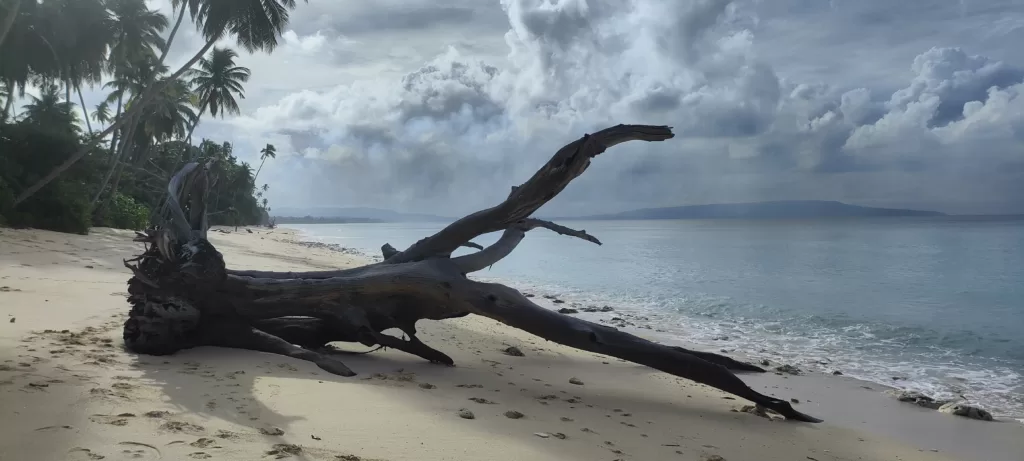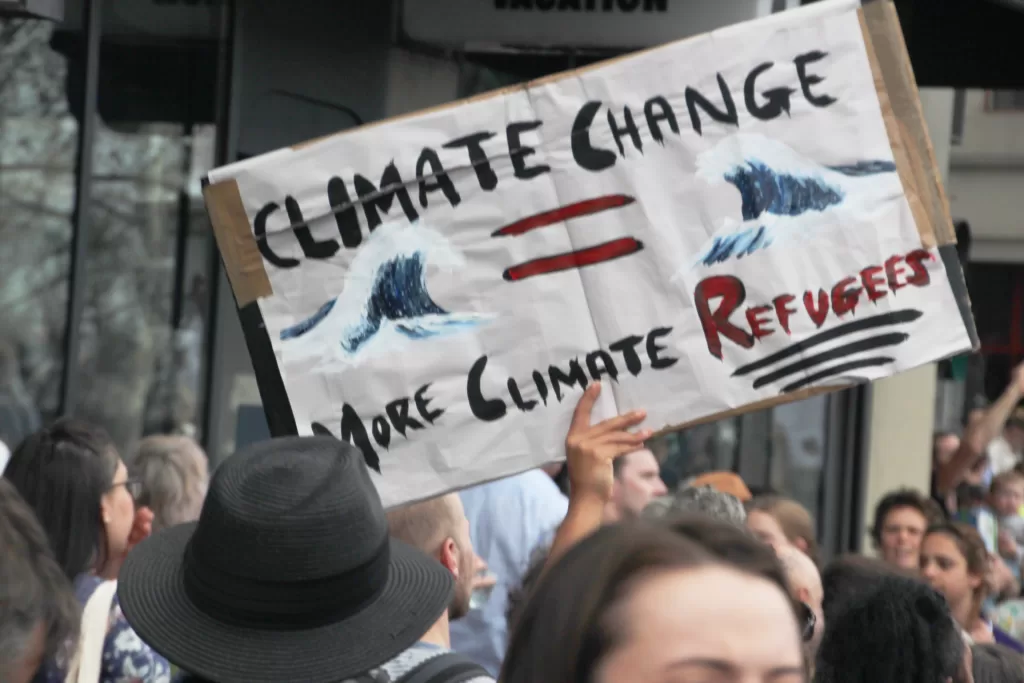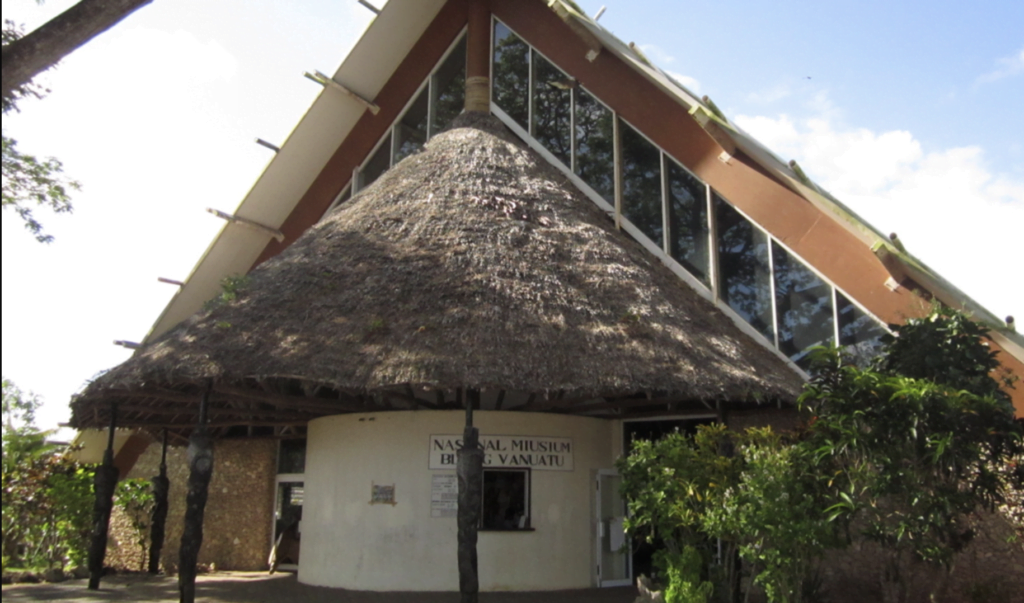The displacement of communities due to climate change can have unexpected impacts on the language landscape of a region.
 Climate change has displaced many island communities and impacted their language structures, such as the Teressa Island community in the Bay of Bengal. : Vysakh R. CC BY 4.0
Climate change has displaced many island communities and impacted their language structures, such as the Teressa Island community in the Bay of Bengal. : Vysakh R. CC BY 4.0
The displacement of communities due to climate change can have unexpected impacts on the language landscape of a region.
A devastating natural disaster 19 years ago has pushed the native language of a tiny island in the Bay of Bengal into decline.
This could be a sign of things to come for many languages as climate change gathers pace and such disasters become more frequent.
The case of Teressa Island in the Nicobar group of the Andaman and Nicobar archipelago underscores the difficulty in predicting how climate change will affect the language landscape in various regions.
Teressa and its smaller neighbour to the north, Chowra, had their own distinct yet highly similar languages named Lurö and Sanenyö, respectively.
After the Indian Ocean tsunami of 2004, Chowra’s inhabitants were relocated to Teressa after all their coastal villages were destroyed.
Nineteen years later, Sanenyö — the language of the displaced community — is replacing Lurö, the language of the community native to Teressa Island.
What makes this situation peculiar is the fact that Teressa and Chowra, where the migrants came from, have been in contact for centuries, and inter-island migration was a very common practice.
Also, many of the refugees actually returned to Chowra after three years, after they petitioned the government for the right to go back.
In such a context where multilingualism was the norm, the tsunami not only altered the island’s geography but also significantly altered the social balance of the place and led to a situation of Lurö becoming endangered.
Climate change affects linguistic communities in multiple ways.
Change in weather patterns can adversely affect small-scale seasonal farming communities that depend on rainfall for irrigation. This could lead to them migrating somewhere else in search of employment, mostly towards bigger towns and cities.
The local language of the community will gradually fall into disuse in such cases. Over time, the language risks becoming endangered because it is no longer being passed down from generation to generation.
Parents often discourage their children from learning and speaking their mother tongue in favour of becoming fluent in the dominant language.
The younger generation also faces such pressure from other institutions such as schools, colleges, government offices and the job market.
For displaced communities, learning the dominant language of their new space, often at the cost of their own language, becomes the only way to secure a living.
Language endangerment is a major social issue that predominantly affects Indigenous and other minority communities.
Scholars predict that up to almost 90 percent of the languages currently spoken around the world will go extinct in the coming 50 to 70 years.
There are multiple causes attributed to this, such as globalisation, social and economic oppression, lack of representation in education and entertainment, and pressure from dominant languages.
When communities are displaced from their original inhabited spaces, many of the words and usages in the language that refer to local geographical features and biodiversity will fall into disuse if these features and elements are not present in their resettlement area.
This will greatly compromise the richness of parts of the vocabulary such as spatial references.
It can even affect performative aspects of language such as its usage in rituals, storytelling and public speaking.
Stigma caused by lack of fluency in the regional language, which is often the medium of instruction in schools, can adversely affect the academic performance of children from these displaced communities.
In recent years, climate change has emerged as a major factor leading to language endangerment. This is most visible in the case of island communities that are becoming the first victims of rising sea levels.
The relationships between language and social structures are highly dynamic.
Climate-induced displacement can lead to unexpected outcomes, like in the case of Teressa where the dominant language spoken by the local community falls into disuse due to the migration of another community affected by the 2004 tsunami to the island.
Scholars have been considering solutions to endangered languages since the late 20th century.
There has been a push to consider linguistic rights as part of human rights and guarantee constitutional and legal protection to speakers of minority languages.
Linguistic rights include ensuring linguistic diversity through comprehensive documentation combined with sustained efforts at revitalising languages.
Several governmental and non-governmental bodies, such as UNESCO, Endangered Language Documentation Program and Summer Institute of Linguistics currently work with communities around the world to document and revitalise their threatened languages.
Scholars have also developed reliable revitalisation methods that cover curriculum planning, textbook development and content creation across mediums and genres.
The institutional support that the projects have garnered has proved vital in determining the effectiveness of these efforts.
Even as climate change continues to displace native communities, language activism in this direction can go a long way towards supporting endangered languages.
Vysakh R is a PhD scholar at the Indian Institute of Technology in Gandhinagar. He currently works in the field of linguistic anthropology. His research interests include multilingualism, language ideologies, linguistic identities, language endangerment and language ecology.
His research has been funded by a Wenner-Gren Foundation Dissertation Fieldwork Grant.
Originally published under Creative Commons by 360info™.









